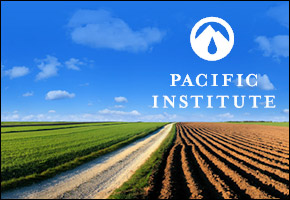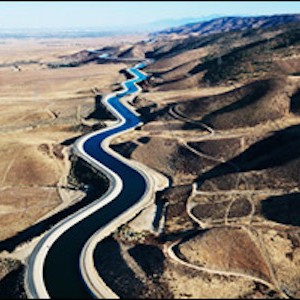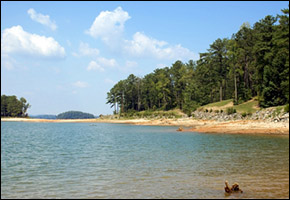Peter Gleick: Saving California Agriculture

The Pacific Institute has just released a major new study that shows that a strong and healthy California agricultural sector can flourish despite diminishing water supply and future uncertainty from climate change, but only if new steps are taken to significantly increase the efficiency of water use in California fields. The good news is that many farmers and irrigation districts are already making improvements in how they use water. The better news is that there is still tremendous untapped potential – potential that totals millions of acre-feet. The report also offers explicit policy and water management changes to capture this potential.
The new report, Sustaining California Agriculture in an Uncertain Future (funded by the David and Lucile Packard Foundation and the William and Flora Hewlett Foundation), quantifies the potential to reduce agricultural water withdrawals and vulnerability to drought and climate change while maintaining and even increasing productivity.
Water Number: 4.5 to 6 million
The number of acre feet each year that we estimate can be saved statewide by comprehensive changes in the irrigation technologies and management practices we use to grow California’s crops. This savings represents around 17% of all of the water used by agriculture in California. In comparison, this is 19 times the amount of water returned to the environment through the recent Delta smelt ruling.
While there are many approaches to increasing our water-use efficiency, we looked at three: improving irrigation and soil moisture management, changing from old inefficient irrigation technology to newer efficient technologies, and regulated deficit irrigation.
Our report finds that all three of these approaches show potential for significant savings. Indeed, all three are already being implemented by innovative farmers. Many farmers have worked hard to improve water-use efficiency in recent years, but much more can be done. For example, an astounding 58% of crops are still irrigated in California by flooding the field – a practice that leads to unproductive water loss. As hard as it is to believe, the last irrigation survey in California showed that nearly 300,000 acres of vineyards are still grown using flood irrigation in the San Joaquin and Tulare hydrologic regions (as are many more acres of crops that don’t need flood irrigation). In comparison, fewer than 4,000 acres of vineyards in the rest of the state are grown using flood irrigation. Converting even a fraction of flood irrigation to sprinklers allows farmers to apply water with greater precision and uniformity, boosting yields and quality, while reducing unproductive water use. Other states already do far more with smart irrigation systems than California.
The report also features several early adopters who have implemented water conservation and efficiency improvements that both reduce water use and increase their bottom line. For example, Craig McNamara, owner and operator of Sierra Orchards, has converted many fields to drip irrigation and installed tailwater recovery ponds to capture excess water runoff (watch the video).
The new report makes specific recommendations, such as property and sales tax exemptions, rebates for efficient irrigation equipment, greater federal support through Farm Bill conservation programs, and better water pricing policies. Here are a few:
– Provide financial assistance and incentives to more farmers to implement efficient irrigation methods.
– Update district irrigation delivery systems to provide water to farmers when it is needed.
– Change current state law, which allows local government to create local groundwater management authorities, to require such authorities throughout the state.
– Provide legislative, regulatory, and administrative support to update the water rights system given future hydrologic uncertainties.
– Empower the State Water Resources Control Board to act as an independent body by changing the appointment and funding processes.
– Develop economic strategies, including pricing, water markets, and water transfer agreements that provide incentives to improve efficiency rather than incentives to consume water.
– Ensure that state and federal water contracts comply with state water law and encourage water conservation by promoting and implementing diverse best management practices.
If California wants a healthy agricultural sector, and if significant new sources of supply remain out of reach or are too expensive, we have no choice but to implement conservation and efficiency more aggressively. The good news is that we’re starting to move in the right direction; the better news is we can do much more.
COMPARISON OF WATER QUANTITIES
For an average water year, the agricultural water conservation and efficiency practices identified in the Pacific Institute report have the potential to save 5.6 million acre-feet of water, equivalent to:
-more than 16 times the amount of water that can be stored in the Hetch Hetchy Reservoir;
-triple the water that can be stored in the far larger San Luis Reservoir;
-4.5 times the water than could be stored in the proposed Temperance Flats Reservoir;
-19 times the water restored to the environment in the recent Delta smelt ruling;
-more than double the 2.3 million acre-feet in urban efficiency improvements identified in the Pacific Institute’s urban water efficiency study of the potential for residential, commercial, and industrial efficiency improvements.
Dr. Gleick’s blog posts are provided in cooperation with the SFGate. Previous posts can be found here.










Leave a Reply
Want to join the discussion?Feel free to contribute!